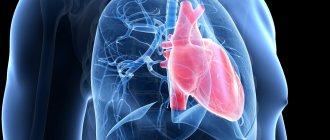Chronic arterial hypertension is a common medical problem of the 21st century, with which people of different ages turn to specialists in developed countries.
Specialists at the Yusupov Hospital diagnose and treat patients with arterial hypertension. The appearance of symptoms of hypertension should be a reason to consult a doctor.
Doctors have modern methods of treating hypertension at their disposal. Achieving a positive result in the treatment of hypertension is possible only with an integrated approach and careful adherence to the instructions of a specialist.
A timely examination can save your life and health.
Hypertension: general information
With arterial hypertension, a person constantly experiences high blood pressure. This condition occurs due to spasm of blood vessels, as a result of which blood flow through them becomes difficult. The diagnosis of arterial hypertension is made by a specialist when there is a stable increase in systolic pressure above 140 mmHg. Art.
To determine pressure, it is necessary to take at least three measurements at different times. The patient should be in a calm state and not take medications that lower or increase blood pressure.
What symptoms may indicate hypertension?
As a rule, the disease is asymptomatic for a long time. In some cases, increased pressure is accompanied by:
- frequent heart rate;
- headaches, dizziness;
- weakness, fatigue;
- redness of the facial skin;
- increased sweating;
- blurred vision, ringing in the ears.
However, such symptoms are not specific to hypertension and may be signs of other diseases or fatigue. Therefore, pathology can be detected at an early stage only by regularly measuring blood pressure.
Causes of arterial hypertension
Experts fail to establish the causes of arterial hypertension in 90% of cases. In 10% of cases, the disease can develop as a complication of another disease or as a result of taking medications. The risk of developing hypertension syndrome may increase due to several factors:
- hereditary predisposition;
- age and gender of the person;
- smoking;
- frequent stressful situations;
- drinking alcohol in large quantities;
- excessive consumption of salt in food;
- low mobility and obesity;
- kidney diseases;
- metabolic disorder;
- diabetes.
Types of arterial hypertension
The classification of arterial hypertension is based on various parameters, one of which is the origin. Based on origin, the patient can be diagnosed with:
- Primary arterial hypertension is caused by many factors, which are being elucidated by specialists all over the world. However, it has been reliably established that the basis of this disease is unfavorable heredity in combination with the factors acting on it. The vast majority of patients - about 90% - suffer from this type of arterial hypertension. This disease has a second name – essential hypertension;
- Secondary arterial hypertension manifests itself when organs involved in the regulation of blood pressure are damaged, therefore the disease is otherwise called symptomatic arterial hypertension.
Diagnosis of arterial hypertension
With this disease, irreversible changes occur in the body that require immediate treatment. Diagnostics takes place in several stages and includes an examination by a specialist and collection of materials for making a diagnosis.
Diagnosis of a patient begins with measuring blood pressure; at least three measurements are required to confirm the diagnosis. If high indicators are obtained, the patient is sent for laboratory and instrumental studies:
- electrocardiogram;
- general and clinical urine analysis;
- biochemical detailed blood test;
- Ultrasound of the heart and internal organs.
The examination regimen is selected by the doctor individually for each patient. If the doctor assumes that the patient has secondary arterial hypertension, the classification of which is extensive, additional studies are carried out on organs whose dysfunction could cause arterial hypertension.
At-risk groups
Stage 2 arterial hypertension is divided into 4 risk groups. They increase as symptoms progress. Pathology can lead to a hypertensive crisis, which promotes rapid damage to internal organs affected by hypertension. The nervous system suffers no less; even during night sleep, it cannot fully recover due to stress caused by pressure surges during arterial hypertension of the 2nd degree.
Benign hypertension and malignant hypertension are also distinguished, which mainly depends on the activity of converting hypertension from one stage to another. In the presence of a malignant form with active development, the disease can lead to death, which is associated with thickening of the vessel walls due to increased pressure in the arteries and rapid pumping of blood through them.
Hypertension stage 2, risk 2 . Appears with vascular atherosclerosis, which is accompanied by frequent pain in the chest area. This occurs as a result of a lack of blood flow into the coronary artery.
This pathology of arterial hypertension of the 2nd degree (risk 2) refers to heart diseases of moderate severity, since over time, less than a quarter of patients have the risk of developing a cardiovascular disorder with great danger to life.
The possibility of establishing a diagnosis of stage 2 hypertension (risk 2) in a patient is only possible if at the time of diagnosis the patient did not have diabetes mellitus, stroke, and the endocrine system did not suffer changes. Excess weight of a patient can have dangerous and irreversible consequences for the body.
Hypertension stage 2, risk 3 . It is usually diagnosed in a patient in parallel with atherosclerosis, diabetes mellitus, and deformed vessels, which are usually associated with a developed form of hypertension. Against the background of these diseases, progressive kidney pathology is often detected. With grade 2 hypertension (risk 3), coronary pressure worsens, resulting in ischemia or hypertensive crisis, which, against the background of pathology, leads to emotional instability of the patient. Often, type 2 hypertension (3) can lead to disability.
Hypertension stage 2, risk 4 . In the presence of a complex of diseases, which includes diabetes, ischemia and atherosclerosis, the patient is diagnosed with stage 2 hypertension (risk 4). This diagnosis is also given to people who have experienced a heart attack, regardless of the affected area.
In any case, specialists are able to predict the degree of development of hypertension, which, in turn, leads to the prevention of disease progression in the presence of effective treatment. Timely diagnosis reduces the regularity of the occurrence of hypertensive crises that occur against the background of pathology.
Classification of arterial hypertension
During the study of arterial hypertension, specialists have developed several classifications on various grounds: etiology, causes of increased pressure, degree of damage to systems and organs, stability and level of pressure, nature of the development of the disease. Some classifications have not lost their relevance over time: according to the stages and extent of the disease.
Based on the recommendations of the World Health Organization, a classification by pressure level has been developed, which has practical significance; the following conditions and degrees of arterial hypertension are distinguished:
- Optimal blood pressure is 120/80 mm Hg. Art.;
- normal blood pressure does not exceed 120/80 – 129/84 mm Hg. Art.;
- borderline blood pressure is in the range of 140/90 – 159/99 mm Hg. Art.;
- Arterial hypertension of the 1st degree is diagnosed when the pressure level is from 140/90 to 159/99 mm Hg. Art. In international practice, risk factors are taken into account when making a diagnosis. So, in a person with given blood pressure levels and in the absence of aggravating factors, a diagnosis can be made: arterial hypertension, stage 2, risk 1;
- Arterial hypertension of the 2nd degree is characterized by blood pressure in the range of 160/100 – 179/109 mm Hg. Art. With one or two aggravating factors, grade 2 arterial hypertension is noted, risk 2;
- Arterial hypertension of the 3rd degree is observed in a patient with a pressure of 180/110 mm Hg. Art. and higher. If more than three aggravating factors are present, arterial hypertension of the 3rd degree, risk 3, is diagnosed. If organ damage is observed, then the diagnosis of arterial hypertension of the 3rd degree, risk 4 is established;
- isolated arterial hypertension is characterized by a systolic blood pressure equal to or exceeding 140, and a diastolic blood pressure below 90 mmHg.
Classification of the disease is important in diagnosing hypertension and determining treatment options depending on the degree and stage. Thus, arterial hypertension of the 1st degree, risk 2, and arterial hypertension of the 2nd degree, risk 3, suggest different methods of treating hypertension.
Diagnostics
To diagnose stage 2 hypertension, instrumental and physical methods are used. The attending physician carefully listens to all the patient’s complaints about his health, after which he conducts a series of examinations aimed at measuring blood pressure. After recording blood pressure readings for several weeks, the doctor makes a conclusion about the degree of hypertension and further prescription of treatment for the patient. If he was initially diagnosed with grade 2 hypertension, then it becomes easier to diagnose later grades based on worsening blood pressure readings.
Methods for physical diagnosis of stage 2 hypertension include the following:
- examination of the functioning of peripheral vessels;
- systematic measurement of the patient’s blood pressure;
- performing percussion of the vascular bundle;
- examining the patient's skin for hyperemia and swelling.
Instrumental methods for diagnosing stage 2 hypertension include:
- Ultrasound of the liver, kidneys, pancreas, endocrine glands;
- ultrasound diagnostics of the heart;
- echocardiogram to detect ventricular hypertrophy;
- electrocardiogram;
- Dopplerography.
Such techniques help to identify the main symptoms and causes of the disease.
Hypertension has three degrees of severity:
- Stage 1 hypertension. It is the initial stage of the disease, has a mild form, and symptoms are mild. Blood pressure at this stage of hypertension averages 150-95 mm Hg.
- Hypertension 2 degrees. Symptoms become quite pronounced, headaches, dizziness, chest pain, and sleep problems appear. Blood pressure averages 170-105 mmHg.
- Hypertension 3 degrees. Stage 3 hypertension is a severe form of hypertension; blood pressure averages 180-120 mmHg. Often accompanied by diseases such as arrhythmia, chronic heart and kidney failure. Portal hypertension appears.
Classification of arterial hypertension by stages
Currently, doctors use a classification based on the nature of organ damage, which distinguishes 3 stages of arterial hypertension:
- arterial hypertension stage 1. At this stage, the patient experiences an intermittent and slight increase in blood pressure, and there are no complaints. The functioning of the cardiovascular system is not impaired.
- Arterial hypertension stage 2, in particular degree 2, is characterized by increased blood pressure. At this stage of the development of the disease, the left ventricle enlarges, and narrowing of the retinal vessels may also be observed.
- arterial hypertension stage 3. This stage is characterized by the following patient conditions: angina pectoris, heart failure, heart attack, stroke, renal failure, disturbances in the blood supply to the brain and eyes.
Stages of pathology
Depending on the degree of increase in blood pressure, three stages of hypertension are distinguished ⇓⇓⇓
First stage of headache
In the first stage of hypertension, high blood pressure can independently return to normal values. As a rule, at this stage of the disease, target organs are not affected and there are no complications.
Second stage of headache
At the second stage of hypertension, a person may experience various pathological changes:
- thickening of the walls of the left ventricle of the myocardium, which often leads to heart failure and coronary heart disease;
- atherosclerosis - the formation of atherosclerotic plaques on the walls of blood vessels that impair blood circulation;
- retinal angiopathy is a violation of the tone of the vessels that supply the iris of the eye.
At the second stage of hypertension, normalization of blood pressure is possible only with the help of medications.
Third stage of headache
The third stage of hypertension can lead to severe complications:
- stroke - acute disruption of blood supply to the brain;
- aortic dissection - rupture of the largest artery. If the aortic wall is completely ruptured, massive blood loss occurs;
- myocardial infarction - necrosis of a section of the heart muscle;
- renal failure - decreased excretory capacity of the kidneys.
In the third degree of hypertension, blood pressure is difficult to normalize even with the help of medications. A person may experience hypertensive crises, during which blood pressure rises sharply and urgent medical attention is required.
Arterial hypertension: treatment with modern methods
The choice of treatment for hypertension is made by specialists based on research data. Treatment methods for arterial hypertension are divided into non-pharmacological and medicinal.
Patients diagnosed with mild hypertension, in particular stage 1 arterial hypertension, may be exempted by their doctor from taking special medications. The main method of non-drug treatment is changing the patient’s lifestyle:
- rejection of bad habits;
- weight control;
- regular moderate physical activity. Daily activities such as moderate walking or light strength training are effective;
- reducing stress. During stressful situations, a person’s blood pressure may increase; it can be lowered with the help of massage, breathing exercises or meditation;
- including foods rich in macro- and microelements in the diet and reducing salt intake.
Medicines for arterial hypertension are prescribed to patients when non-drug therapy has proven ineffective within 3-4 months, and there are risk factors. Thus, arterial hypertension 2 risk 3 requires taking special medications. The number of drugs is determined by blood pressure and the presence of concomitant diseases.
Modern doctors prescribe drugs for the treatment of arterial hypertension in accordance with one of the strategies: monotherapy or combination therapy. When drawing up a treatment plan, the question of the admissibility of using one drug is the most pressing for the specialist.
In monotherapy, a patient with grade I is prescribed one drug at the beginning of the course of treatment. An important factor when prescribing a drug is its effectiveness in reducing the risk of complications. Currently, to control blood pressure, doctors use the most studied drugs belonging to two groups: thiazide-like and thiazide diuretics, which have a diuretic effect.
Combination therapy is prescribed to patients with a high degree of risk, as well as with stages II and III of the disease. With this method of treatment, drugs with different mechanisms of action are selected to lower blood pressure and reduce possible side effects.
Experts on the question of how, if a patient has arterial hypertension, how to treat this disease with drugs, prefer to use several groups of drugs:
- beta blockers. For several decades, beta blockers have been used as the mainstay of treatment for hypertension in children and adolescents. However, multiple side effects have now been identified, and therefore their use has become limited. Experts include the main side effects: sleep disturbances, increased blood glucose levels, weakness and mood swings. An important condition when using these funds is an electrocardiogram and regular monitoring of blood sugar;
- Diuretics are prescribed to patients for a long period; they remove excess fluid from the body. Side effects include: fainting, decreased calcium levels in the blood;
- calcium channel blockers. Drugs in this group are used quite widely to treat patients; doctors give preference to drugs with a long period of action. Side effects of blockers include: gastrointestinal disorders, rapid heartbeat, weakness, dizziness and swelling;
- ACE inhibitors. The mechanism of action of these drugs is to block the action of enzymes that are involved in the formation of a vasoconstrictor;
- alpha adenoblockers. The effect of drugs in this group is manifested in a decrease in pressure through blocking receptors located in the artery wall.
Symptoms
With stage 1 hypertension, blood pressure increases to 150-95 mmHg and tends to be constant over a fairly long period of time. To reduce indicators, the patient needs to create favorable conditions to improve well-being.
The first symptoms of stage 1 hypertension are often not perceived by patients
as the main risk factor for the development of stage 2 hypertension, but most patients consult doctors with complaints of constant headaches, poor sleep, chest pain, and periodic blurred vision. The presence of small hypertensive crises is noted. The performance of the heart and kidneys remains within normal limits. They do not have any damage associated with hypertension.
The ambiguity of the symptoms of stage 2 hypertension makes it difficult to diagnose the disease in a patient, since high blood pressure can be associated with a large number of other problems in the body. When diagnosing the disease, specialists pay attention to the main symptoms of stage 2 hypertension. This:
- The appearance of swelling of the face and swelling of the eyelids and eyes.
- The appearance of spider veins on the surface of the facial skin.
- Painful throbbing in the temples.
- The appearance of aching pain in the back of the head.
- Lack of vigor and energy after a night's sleep.
- Apathy and irritability.
- Swelling of the hands.
- Periodic darkening of the eyes, inability to focus vision.
- Increased heart rate with low physical activity.
- Memory problems.
Prognosis for arterial hypertension
Treatment of vasorenal arterial hypertension and the prognosis for this disease depend on the patient’s compliance with the recommendations of the attending physician and the adequacy of the prescribed therapy. The prognosis for hypertension can be quite favorable. However, for this it is important to identify the problem in a timely manner and develop treatment tactics.
The prognosis for women, as medical practice shows, is more favorable than for men. The course of the disease is influenced by the following factors: the rate of development of the disease, the stability of pressure and the presence of diseases of other organs and systems. Modern standards of treatment for arterial hypertension make it possible to achieve success in more than 85% of cases.
Disability due to hypertension 2nd degree
Stage 2 hypertension may be a reason to give a person a disability group. If there is a persistent impairment of the body's performance in a patient suffering from stage 2 hypertension, the patient is referred for examination to experts to clarify all indicators. The degree of disability is influenced by factors such as:
- stage of the disease;
- number of hypertensive crises;
- working conditions of the patient.
Establishment of a disability group is required for the patient to secure employment with special working conditions. Patients who have received a disability with a diagnosis of hypertension of the 2nd degree must be allowed to work subject to certain restrictions, which include:
- strong vibration and noise;
- physical exercise;
- emotional exhaustion;
- high altitude;
- long working day.
When diagnosed with stage 2 malignant hypertension, the patient receives group 2 disability due to inability to work. To confirm the conclusion, a medical examination is carried out once a year. Assigning a disability group to a patient with hypertension of 2 and 3 degrees is associated with the requirement of social protection of patients, since it has limited ability to work.
Prevention of arterial hypertension
Giving up bad habits and normalizing lifestyle are the basis for preventing hypertension. Knowledge of the principles of preventing hypertension allows you to prevent the disease, facilitate its course, and also eliminate possible complications. Experts distinguish between primary and secondary prevention.
Primary prevention is to prevent the development of hypertension. People at high risk of developing arterial hypertension should not only fight bad habits and adhere to the principles of proper nutrition, but also monitor their physical activity.
Secondary preventive measures are carried out for people with an established diagnosis, for example, gestational hypertension. The efforts of doctors and patients are aimed at preventing complications. Secondary prevention consists of two components: arterial hypertension (treatment with tablets) and non-drug treatment.
Doctors at the Yusupov Hospital have extensive experience in treating arterial hypertension. The quality of services provided in the hospital is at the European level. All diagnostic and treatment procedures are performed using the latest medical equipment. The rooms are equipped with maximum comfort for patients. You can make an appointment with a doctor by phone.
Treatment of hypertension
Stage 1 hypertension is the most favorable for treatment, since the underdeveloped disease has not yet had a strong impact on the patient’s health. Following basic rules of a healthy diet and lifestyle can be effective in preventing the first symptoms.
The treatment of stage 1 hypertension includes two treatment methods:
- traditional, drug treatment;
- treatment with traditional medicine.
Can hypertension be cured? Treatment of stage 2 hypertension not only helps to improve the patient’s quality of life, but also prevents the likelihood of a hypertensive crisis, stroke or myocardial infarction.
The use of a medicinal method for treating stage 2 hypertension includes taking medications that will help fight the primary causes of hypertension. To do this, experts recommend taking neurostimulants or psychotropic drugs to reduce stress and blood pressure; sedatives to normalize tissue metabolism. These include antidepressants and tranquilizers. They often resort to the use of sedatives (valerian), drugs containing bromine, sleeping pills, and drugs containing magnesium.
Another group for drug treatment of stage 1 hypertension is diuretics. They help reduce retained fluid in the body and remove salts from it.
Since the main problem associated with stage 1 hypertension is high blood pressure, it is often necessary to use a group of drugs designed to effectively reduce levels. They belong to the group of vasodilator drugs and have a peripheral effect, preventing the progression of the disease caused by portal hypertension.
If there is a lack of effective use of the above medications, doctors resort to the use of antihypertensive drugs. They are prescribed to stabilize blood pressure and prevent the progression of diseases of the cardiovascular system. These include:
- beta blockers;
- thiazide diuretics;
- calcium channel blockers;
- ACE inhibitors.
The use of thiazide diuretics reduces the risk of developing cardiovascular diseases. Doctors often prescribe thiazide diuretics such as the medications Torasemide, Furosemide, Amiloride, Chlorthalidone, Indapamide, and Hydrochlorothiazide.
The use of beta blockers reduces blood pressure by reducing heart rate and blood output. Usually prescribed in the presence of ischemic disease. These drugs can normalize blood pressure in case of cardiac arrhythmia, heart failure, tachycardia, and angina. These include:
- "Labetalol";
- "Acebutolol";
- "Sotalol";
- "Pondolol";
- "Bisoprolol";
- "Nebivolol".
The functions of ACE inhibitors include a decrease in angiotensin-converting enzymes. This treatment is prescribed when the patient has suffered a myocardial infarction, heart failure, body problems that accompany diabetes, or vascular pathology that causes portal hypertension. These drugs are especially recommended if the patient has stage 3 hypertension.
Before taking medications belonging to any of these groups, be sure to consult a specialist to prescribe the correct dosage. Doctors advise using complex therapy with constant monitoring of blood pressure.
Diet is one of the basic principles of treating stage 1 hypertension, since the treatment regimen requires, at a minimum, to reduce the level of salt in the blood.
Based on this, nutritionists recommend completely avoiding eating salty, fatty and fried foods, as well as foods containing light carbohydrates.
Treatment does not imply a reduction in the patient’s active lifestyle. Light physical activity, used in physical therapy, promotes better absorption of medications by the body. It is worth sticking to a proper sleep schedule, avoiding stressful situations and giving up bad habits.
Traditional methods of treatment, which our ancestors resorted to, are herbal remedies with a sedative effect that help fight high blood pressure. A large number of infusions with mint, hawthorn, yarrow, with the addition of green tea, rose hips and lemon are used, which are excellent remedies for hypertension.








